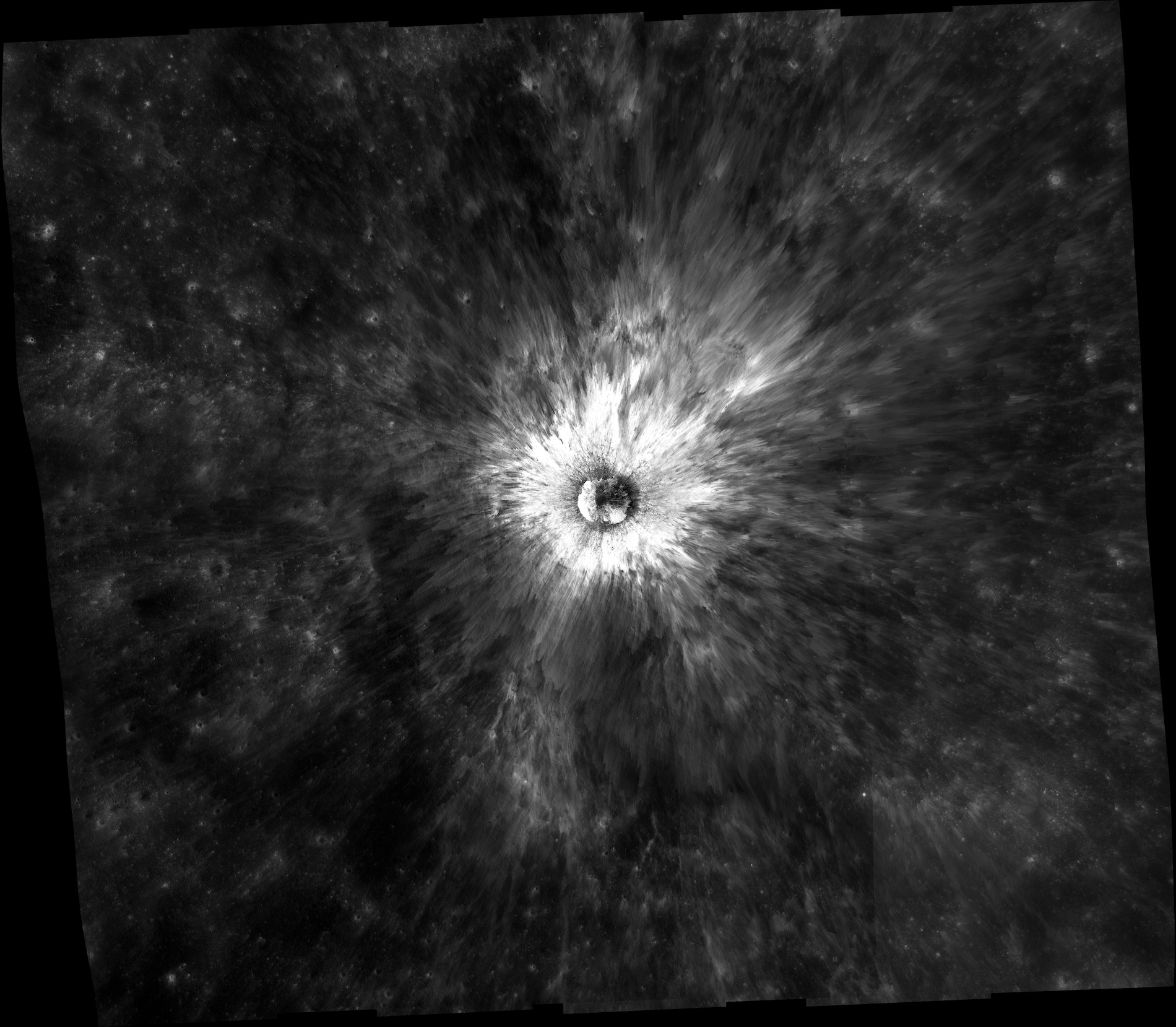Chaplygin B Crater

| Credit | NASA/GSFC/Arizona State University |
|---|---|
| Language |
|
This mosaic of Chaplygin B Crater is composed of several images from the Lunar Reconnaissance Orbiter's Narrow Angle Camera. The crater measures 0.87 miles across (1400 meters).
Space rocks like asteroids, comets, and meteors slam into the surface of the Moon at speeds typically greater than 15 kilometers per second (10x faster than a speeding bullet). So much energy is released that much of the impacting rock is vaporized and the target rock is ejected at a range of speeds. Very young craters such as this one provide the key to understanding the physics of these powerful events. The delicate patterns show stages of ejection, mode of travel, thickness of deposited materials and the effects of pre-existing topography on ejecta flow.
What evidence do we have that this crater is relatively young?
- Brighter white materials
- Exposure to space weathering tends to lower the brightness of surface materials on an airless body like the Moon. Brighter whites often means newly-exposed materials.
- Crisp edges on the crater
- With time, gravity and other disturbances, such as ground shaking from other impacts, pull material down the walls of a crater.
- There aren’t other craters on top of it
- The Moon is constantly bombarded so the longer a crater is on the surface, the more likely it is that another crater will form over it. You can make your own impact craters at home to see this process in action.

